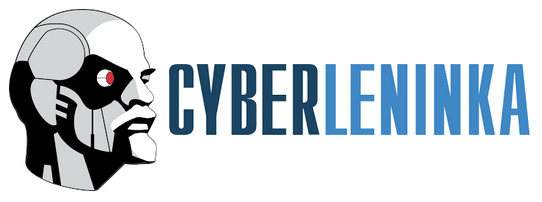“TECHNICAL LIMIT” AS A MEANS OF OPTIMIZING COSTS IN THE CONSTRUCTION OF OIL WELLS
Abstract
To ensure economic efficiency, especially under crisis conditions, when hydrocarbon prices are in the zone of volatility and the imbalance of supply and demand is observed, Russian oil companies need to reduce all types of costs, in particular, minimizing the opportunity costs associated with time losses during the construction of oil wells, which constitute more than 40% of all losses. The purpose of the research presented in the article is to highlight and analyze the results of Tyumenneftegaz JSC successful project experience when applying one of the tools of lean production concept – "technical limit" – which allowed us to significantly reduce time losses (non-productive time) when drilling oil wells at the Russkoyeoilfield. Theoretical base of the research was formed by scientific works, which form the best understanding of the lean production concept and key principles of its tools implementation in the companies’ practice. "Technical limit" is a universal tool to reduce the time of business processes solely through organizational changes, without involving new technologies, equipment and materials. The project implementation process of introducing the "technical limit" tool of Tyumenneftegaz JSC is presented by describing its four stages: planning, preparation (to the drilling process), implementation (drilling) and the lessons learned. The distribution of actual time costs of drilling one well before and after the application of the "technical limit" tool is illustrated; the projected significant economic effect (about 800 mln rubles) from its use on the overall Russkoye oilfield territory, consisting of eight multiple-well platforms, is calculated. Recommendations for project management in case of retranslating the Tyumenneftegaz, JSC successful experience studied in the article into the practice of other enterprises of the Russian oil and gas sector have been elaborated.
Keywords
lean production, well drilling, non-productive time, oil and gas industry, labor productivity, cost reduction reserves, well construction, "technical limit”
References
Eremin N.A., Chernikov A.D., Stolyarov V.E., Safarova E.A., Filippova D.S., Goreva A.V. Non-breaking gas production // Geology, Geophysics and Development of Oil and Gas Fields. 2020. Vol. 12(348). Pp. 51-60. (In Russ.). DOI: 10.30713/2413-5011-2020-12(348)-51-60
Lomonosov D.A., Polbin A.V., Fokin N.D. The impact of global economic activity, oil supply and speculative oil shocks on the Russian economy // HSE Economic Journal. 2021. Vol. 25(2). Pp. 227-262. (In Russ.). DOI: 10.17323/1813-8691-2021-25-2-227-262
Beloshitsky A.V. The economic mechanism for creating a business-model of oilfield service company // Oil Industry. 2020. Vol. 1. Pp. 20-23. (In Russ.). DOI: 10.24887/0028-2448-2020-1-20-23
Pogadaev S.V., Sobolev A.O., Karsakov V.A., Kulakov K.V. Technical Limit: A way to improve drilling efficiency // Oil Industry. 2015. Vol. 12. Pp. 28-29. (In Russ.).
Masaaki Imai. Gemba Kaizen: A Commonsense, Low-Cost Approach to Management. McGraw-Hill, 1997. 354 p.
Samatova T.B. Lean oil refining as an area of lean production development // Moscow Economic Journal. 2021. Vol. 7. P. 39. (In Russ.). DOI: https://doi.org/10.24411/2413-046X-2021-10400
Pimenova N.A., Skrypnik G.V. Printsipy vnedreniya berezhlivogo proizvodstva v kompaniyakh neftegazovoy otrasli [Principles of introducing lean production in oil and gas companies] / Neftegazovyy kompleks: problemy i innovatsii [Oil and gas complex: problems and innovations]: theses of the III SPC with international participation, Samara, 23-25 October 2018. Samara: Samara State Technical University, 2018. P. 153. (In Russ.).
Neftyanyye kompanii osvaivayut berezhlivyye tekhnologii [Oil companies master lean technologies] (2019). PROkachestvo. (In Russ.). URL: https://kachestvo.pro/news/neftyanye-kompanii-osvaivayut-berezhlivye-tekhnologii/ (accessed on 03.02.2022).
Kurs na berezhlivoye proizvodstvo, ili Kak «Slavneft'-Megionneftegazu» udalos' dobit'sya sushchestvennogo snizheniya izderzhek [The course towards lean production, or How Slavneft-Megionneftegaz managed to achieve a significant cost reduction] (2019). Natsional'naya assotsiatsiya neftegazovogo servisa [National Oil and Gas Service Association]. (In Russ.). URL: https://nangs.org/news/technologies/kurs-na-berezhlivoe-proizvodstvo-ili-kak-slavnefty-megionneftegazu-udalosy-dobitysya-sushtestvennogo-snizheniya-izderzhek (accessed on 05.02.2022).
Dmitrievsky A.N., Sboev A.G., Eremin N.A., Chernikov A.D., Naumov A.V., Gryaznov A.V., Moloshnikov I.A., Borozdin S.O., Safarova E.A. On increasing the productive time of drilling oil and gas wells using machine learning methods // Georesursy. 2020. Vol. 22(4). Pp. 79-85. (In Russ.). DOI: 10.18599/grs.2020.4.79-85
Dmitrievsky A.N. Eremin N.A., Safarova E.A., Filippova D.S., Borozdin S.O. Qualitative analysis of time series geodata to prevent complications and emergencies during drilling of oil and gas wells // Socar Proceedings. 2020. Vol. 3. Pp. 31-37. (In Russ.). DOI: 10.5510/OGP20200300442
Alekseev A. [Predel'naya effektivnost'] Ultimate efficiency // Sibirskaya neft' [Siberian Oil]. 2018. Vol. 1(148). Pp. 34-39. (In Russ.). URL: https://www.gazprom-neft.ru/press-center/sibneft-online/archive/2018-february/1439928/ (accessed on 05.02.2022).
71 instrument berezhlivogo proizvodstva. Vse metody proizvodstva bez poter' v odnom meste [71 Lean Tools. All lossless production methods in one place] (2022). Bez poter' [Lossless]. (In Russ.). URL: https://bezpoter.com/71-instrument-lean (accessed on 05.02.2022).
About the Author
Temur A. Khudayarov – Graduate Student, National Research Tomsk Polytechnic University, Tomsk, Russia. E-mail: tah4@tpu.ru. SPIN РИНЦ 1585-7782
For citation
Khudayarov T.A.“Technical Limit” as a Means of Optimizing Costs in the Construction of Oil Wells// BENEFICIUM. 2022. Vol. 1(42). Pp. 26-31. (InRuss.). DOI: 10.34680/BENEFICIUM.2022.1(42).26-31









